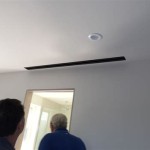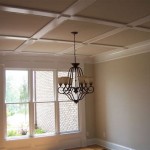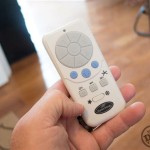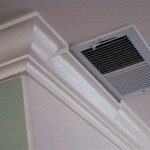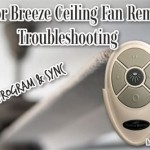How to Mount a Ceiling Fan on an Angled Wall
Mounting a ceiling fan on an angled or sloped ceiling presents a unique set of challenges compared to a standard flat ceiling installation. The primary concern is ensuring the fan hangs vertically and operates safely, preventing wobbling, noise, and potential structural damage. This article provides a comprehensive guide to properly installing a ceiling fan on an angled wall, covering necessary preparations, essential components, and step-by-step instructions.
Before commencing any installation work, it is crucial to prioritize safety. Turn off the power to the circuit at the breaker box that controls the ceiling fixture. Verify the power is off using a non-contact voltage tester. This step is non-negotiable and prevents electrical shock. It is also wise to have a helper available throughout the process, especially when lifting and securing the fan unit.
Key Point 1: Assessing the Angle and Selecting the Appropriate Mounting Hardware
The first step involves accurately determining the ceiling angle. This angle dictates the type of mounting hardware required. Ceiling fans designed for angled ceilings typically accommodate slopes up to a certain degree, often around 30-45 degrees. Using a protractor, an angle finder tool, or a digital level with angle measurement capabilities, measure the slope of the ceiling accurately. Record this measurement for reference when selecting the appropriate mounting kit.
Once the angle is determined, select a compatible mounting kit. These kits generally include an angled mounting bracket and a downrod designed for sloped ceilings. The downrod is a crucial component; it extends from the mounting bracket to the fan motor housing, allowing the fan to hang vertically despite the angled ceiling. The length of the downrod is also important. Consider the ceiling height. A longer downrod is necessary for high ceilings to ensure adequate airflow, while a shorter downrod is suitable for lower ceilings to maintain headroom.
The mounting bracket must be securely fastened to a ceiling joist. A standard electrical box, often used for light fixtures, is usually insufficient to support the weight and dynamic forces of a rotating ceiling fan. Locate a ceiling joist using a stud finder. If the existing electrical box is not directly attached to a joist, it must be replaced with a fan-rated electrical box specifically designed for supporting ceiling fans. These fan-rated boxes are typically heavier-duty and are securely attached to the joist with screws or nails.
If the joist does not align with the desired fan location, a brace may be required. A brace is a piece of lumber installed between two adjacent joists, providing a solid mounting surface for the fan-rated electrical box. Ensure the brace is properly sized and securely fastened to the joists using construction adhesive and screws or nails.
Examine the selected mounting kit to ensure all necessary hardware is present, including screws, washers, wire connectors, and any specialized components for angled ceiling installations. Refer to the manufacturer's instructions for the specific kit to verify compatibility and proper installation procedures.
Consult local building codes regarding ceiling fan installation on angled ceilings. Some jurisdictions may have specific requirements for mounting hardware, electrical connections, and downrod lengths. Compliance with these codes is essential for safety and legal reasons.
Key Point 2: Preparing the Electrical Wiring and the Fan Motor Assembly
With the appropriate mounting hardware selected and the ceiling joist identified, the next step involves preparing the electrical wiring and the fan motor assembly. Begin by carefully removing the existing light fixture, if present. Disconnect the wires, noting their connections (e.g., black to black, white to white, ground to ground). Use wire connectors to safely cap off any exposed wires temporarily.
Inspect the existing wiring to ensure it is in good condition. Replace any damaged or frayed wires. If the wiring is insufficient gauge (too thin) for the ceiling fan's electrical load, rewire the circuit with thicker gauge wire. Refer to the fan's specifications and local electrical codes to determine the appropriate wire gauge.
Install the fan-rated electrical box securely to the ceiling joist or brace. Ensure the box is flush with the ceiling surface and level. Connect the ground wire from the house wiring to the grounding terminal in the electrical box. This is a critical safety step to prevent electrical shock.
Follow the manufacturer's instructions to assemble the fan motor housing. This typically involves attaching the fan blades, the light kit (if applicable), and any decorative components. Be careful not to overtighten any screws, as this could damage the fan motor or blades.
Prepare the downrod by threading the wires from the fan motor housing through the downrod. Ensure the wires are not twisted or pinched. Connect the downrod to the fan motor housing, following the manufacturer's instructions. Some downrods may require specific orientation or locking mechanisms.
Before lifting the fan motor assembly, double-check all connections to ensure they are secure and properly wired. Loose connections can cause the fan to malfunction or pose a safety hazard.
Key Point 3: Installing the Mounting Bracket and Connecting the Electrical Wiring
With the fan motor assembly prepared, install the angled mounting bracket onto the fan-rated electrical box. Align the bracket with the box and secure it using the appropriate screws. Ensure the bracket is level and securely fastened to the joist or brace. The bracket should be able to support the weight of the fan without any movement or instability.
Lift the fan motor assembly carefully and hang it from the mounting bracket. Many mounting brackets have a hook or temporary support feature that allows you to hang the fan while connecting the electrical wiring. This feature is particularly helpful when working alone.
Connect the electrical wires from the house wiring to the wires from the fan motor housing, matching the colors (black to black, white to white, ground to ground). Use wire connectors to securely join the wires, ensuring no bare wire is exposed. Wrap the wire connectors with electrical tape for added insulation and security.
Carefully tuck the wires into the electrical box, ensuring they are not pinched or strained. This will prevent damage to the wires and potential electrical issues. Position the fan motor housing so that it is flush with the ceiling and aligned with the mounting bracket.
Secure the fan motor housing to the mounting bracket using the provided screws. Tighten the screws evenly to ensure a secure and stable connection. Do not overtighten the screws, as this could damage the bracket or the fan motor housing.
If the ceiling fan includes a light kit, install it according to the manufacturer's instructions. This typically involves connecting additional wires and securing the light fixture to the fan motor housing.
Once the fan is fully installed and the electrical connections are secure, restore power to the circuit at the breaker box. Test the fan to ensure it is operating correctly. Check for wobbling, excessive noise, or any other issues. If the fan wobbles, balance the blades using the balancing kit provided with the fan. If the problem persists, consult a qualified electrician.
Ensure all screws and connections are tightened regularly to maintain the fan's stability and prevent it from loosening over time. Periodic inspections are recommended to identify and address any potential issues before they become major problems.
Following these steps carefully ensures a safe and effective installation of a ceiling fan on an angled wall. Remember that safety is paramount, and consulting a qualified electrician is always recommended if you are unsure about any aspect of the installation process.

How To Install A Ceiling Fan On Sloped Lemon Thistle

Mounting Ceiling Fan On Sloped Home Improvement Stack Exchange

Electrical Mount Ceiling Fan At The Peak Of A Sloped Home Improvement Stack Exchange

How To Install A Ceiling Fan On Sloped Lemon Thistle

Ensuring Proper Ceiling Fan Installation With Vaulted Ceilings

How To Choose A Ceiling Fan For Vaulted Ceilings Lightology

Install Ceiling Fan On Sloped Simple Modern Handmade Home

Vaulted Sloped Ceiling Adapter For Modern Fan Company Fans Stardust

How To Install A Ceiling Fan Hunter

How To Choose A Ceiling Fan For Vaulted Ceilings Lightology
Related Posts


